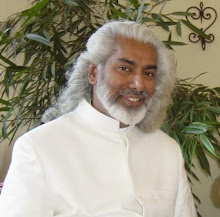
To understand the existence of various divine and semi-divine forms that include parts of animals or full animals, it is very important to always keep in mind the consciousness of the ancient Rishis, who ‘saw’ the myths was very different from our own today. Our experience of ‘reality’ is very different from thousands of years ago, as can be seen in mythology and doctrine. Today we are all more or less influenced and indoctrinated by the western Greek-Christian worldview that lays at the basis of today’s technological and materialistic civilization. This is a huge subject in itself. I have written about this in some detail in my book ‘A Stream of Thoughts’ which I have made available through http://www.lulu.com/rajadeekshithar
Once we try to transport ourselves into the minds and consciousness of the pre-industrialized civilizations we first of all have to learn to take consciousness and mind more serious. In the Vedic traditions of Darshana, philosophy, Spirit comes before anything else. The undifferentiated Absolute Spirit, Purusha or Brahman, is the source of everything. I personally believe the primordial ‘energy’ of the Big Bang is the equivalent of Brahman, as I have explained in ‘A Stream of Thoughts’.
Once we look at the cosmos as consisting primarily of Spirit, consciousness, we immediately see a very different world then what we ‘see’ when we look at reality through the eyes of Western materialistic science. From Primordial Spirit various divine ‘energies’ devolve, as described in the mythology, Rig Veda and the Puranas. I myself think of these as ‘fields of force’ but with consciousness. When we, as human beings, through the vision of the Rishi, give form to these divine energy fields, bringing them into a physical existence for our own benefit, we embody them as Yantra or as Murti.
The cosmos is a kind of hierarchy of being, (in Medieval European culture and among the Neo-Platonists this was called the ‘Divine Chain of Being’) from the highest spirit, to the ‘lowest’ material particle. And from the doctrine we know there exist all kinds of spiritual beings with all kinds of powers and influences which we cannot see with our ‘modern’ materialistic eyes. Some of these beings have a definite spiritual form. Others we give form ourselves, influenced by how we see and experience their powers.
When the Rishis described the forms of divinities as they saw them with their vision, they had to describe their vision in terms that could be understood by humanity. That is why there is so much symbolism in mythology. The animal form can have two functions. It can express a higher form of being and it can express a lower energy vibration. According to doctrine, human existence is placed in the center between higher and lower forms of consciousness. Our existence is a kind of cross roads where consciousness can either move higher or sink lower. We have freedom of choice in this. That is what is called Karma.
When we ‘see’ a divine energy with a part animal form, this expresses an aspect of the divinity’s power. The animal form represents an aspect of the divine energy which vibrates similar as the energy of the animal. The vahana also expresses an aspect of that power, as do the attributes.

The many mythological beings that are not deities but combine various animal and human forms, such as Kimnaras, Makaras, Yalis etc. reflect semi-divine beings which I am sure have a reality of their own. But not a material/physical reality. They reflect vibrations of consciousness that reflect their attributes on a spiritual level. The doctrine has names and classifications for them. And they serve various spiritual functions, such as Shiva’s Bhuta Ganas. The Indian sphinx is classified as a Pramotha Gana of Lord Shiva. Its function is protection and purification. The sphinxes of Western antiquity had the same function. This is an indication of the spiritual reality of these beings on a non-physical plane.

The Divine Chain of Being is in constant evolution. Lower forms evolve into higher forms, higher forms devolve into lower forms. Evolution and Devolution. It is therefore very important to realize the difference between a being with an animal body and a human head, like the sphinx, or a human body with an animal head, such as Lord Narasimha. Both express very different concepts and vibrations of divine energy. Lord Vishnu devolved into Lord Narasimha to raise the negative energy of the cosmos to a higher level of vibration. The sphinx reflects the concept of evolution. The energy of the lion, in combination with the energy and consciousness of the human being, generates a form higher then the sum of the two.

I would like to give the following illustration through explaing something about Lord Mahaganapati and the tiny shrew or mushika who is His vahana. This apparent opposition expresses the essence that the huge gigantic form and energy of Mahaganapati also expresses in the tiny shrew. The shrew looks tiny to our eyes, but has gigantic power. The same energy in Him is also present in the shrew. So the lowest soul can also with the right path achieve the highest divine realization, realized consciousness. So many myths and Divine forms teach the same in different ways.


